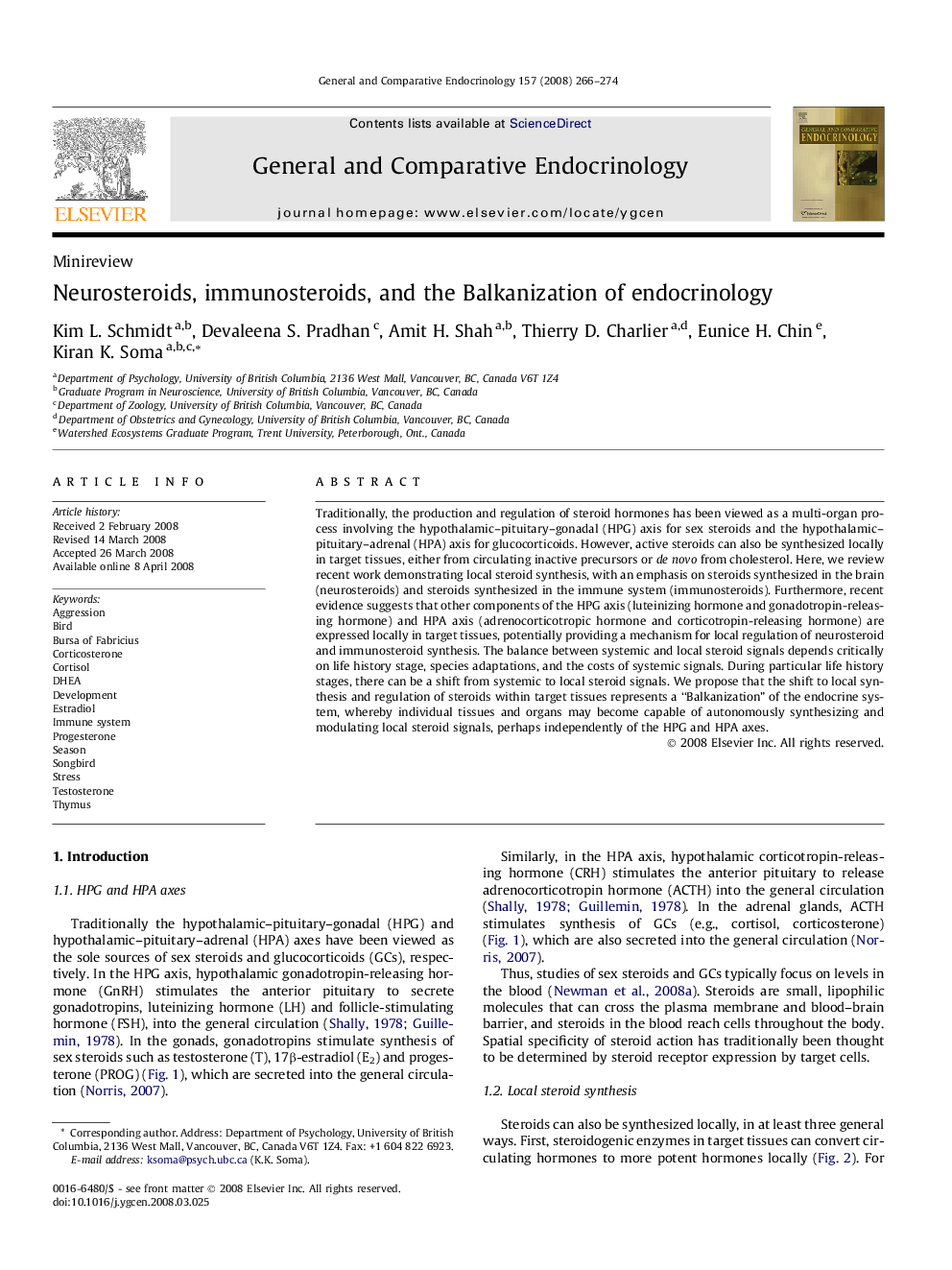| Article ID | Journal | Published Year | Pages | File Type |
|---|---|---|---|---|
| 2801699 | General and Comparative Endocrinology | 2008 | 9 Pages |
Traditionally, the production and regulation of steroid hormones has been viewed as a multi-organ process involving the hypothalamic–pituitary–gonadal (HPG) axis for sex steroids and the hypothalamic–pituitary–adrenal (HPA) axis for glucocorticoids. However, active steroids can also be synthesized locally in target tissues, either from circulating inactive precursors or de novo from cholesterol. Here, we review recent work demonstrating local steroid synthesis, with an emphasis on steroids synthesized in the brain (neurosteroids) and steroids synthesized in the immune system (immunosteroids). Furthermore, recent evidence suggests that other components of the HPG axis (luteinizing hormone and gonadotropin-releasing hormone) and HPA axis (adrenocorticotropic hormone and corticotropin-releasing hormone) are expressed locally in target tissues, potentially providing a mechanism for local regulation of neurosteroid and immunosteroid synthesis. The balance between systemic and local steroid signals depends critically on life history stage, species adaptations, and the costs of systemic signals. During particular life history stages, there can be a shift from systemic to local steroid signals. We propose that the shift to local synthesis and regulation of steroids within target tissues represents a “Balkanization” of the endocrine system, whereby individual tissues and organs may become capable of autonomously synthesizing and modulating local steroid signals, perhaps independently of the HPG and HPA axes.
